We dwell at world heritage sites
Among the numerous Chinese world-heritage sites, five are located in Yunnan province: Lijiang Old Town, Kunming Stone Forest, Chengjiang Fossil Site, Hani Terraced Paddy Fields, and Three Parallel Rivers. Folks living in the protected areas shared their stories on the co-existence of heritage, community and man.
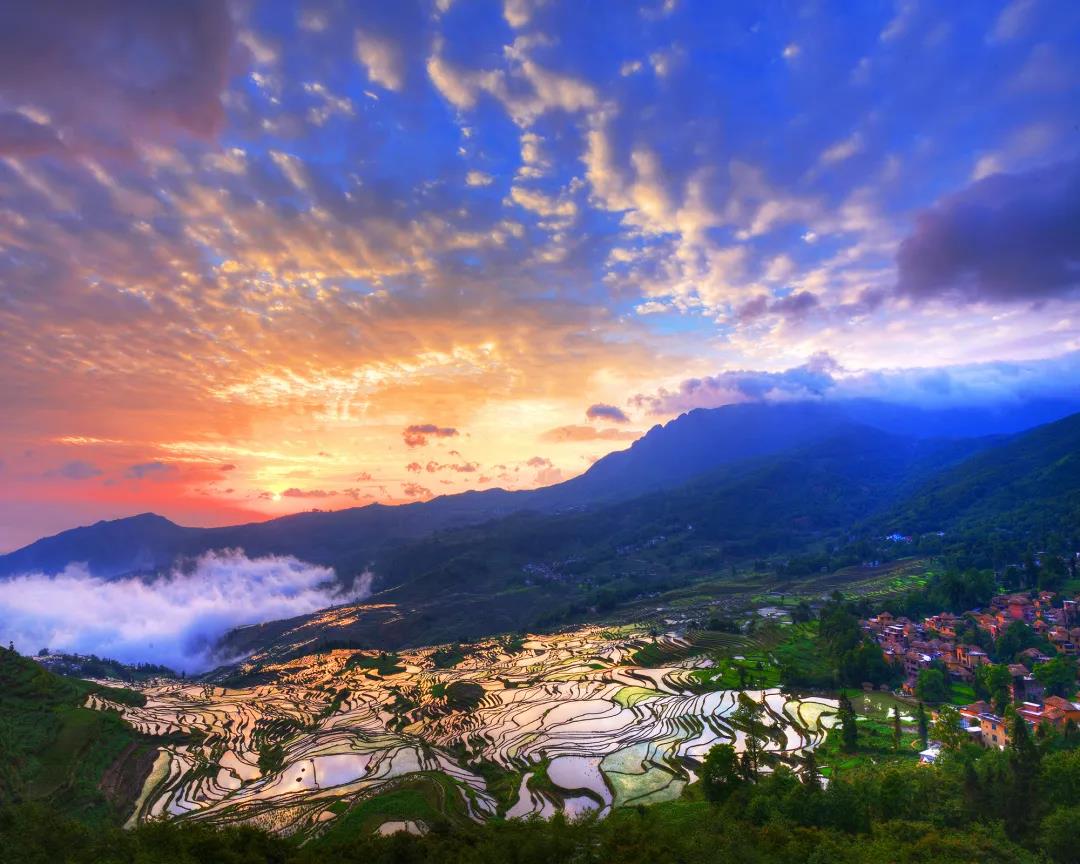
The Yuanyang Hani Terraced Paddy Field in south Yunnan (Online photo)
We dwell at world heritage sites
During the 44th session of the World Heritage Committee, historical sites in east China's port city of Quanzhou, dubbed as “Emporium of the World in Song-Yuan China", won UNESCO World Cultural Heritage status on July 25, bringing the total number of the country's UNESCO World Heritage sites to 56.
Among the numerous Chinese world-heritage sites, five are located in Yunnan province. Now please follow our reporters to Yunnan’s five world heritage sites, appreciating the cultural charm therein and exploring the co-existence of heritages, settlements and humans.
He Runyuan brings Dongba charm to more
NOTE: Located in the Gucheng district, northwest Yunnan’s Lijiang city, the Old Town of Lijiang has a history of over 800 years, and it was inscribed on the World Heritage List in 1997. As the first Chinese city on world heritage list, the Lijiang town is cradle of Naxi people’s Dongba character, which is the only living hieroglyph in the world.
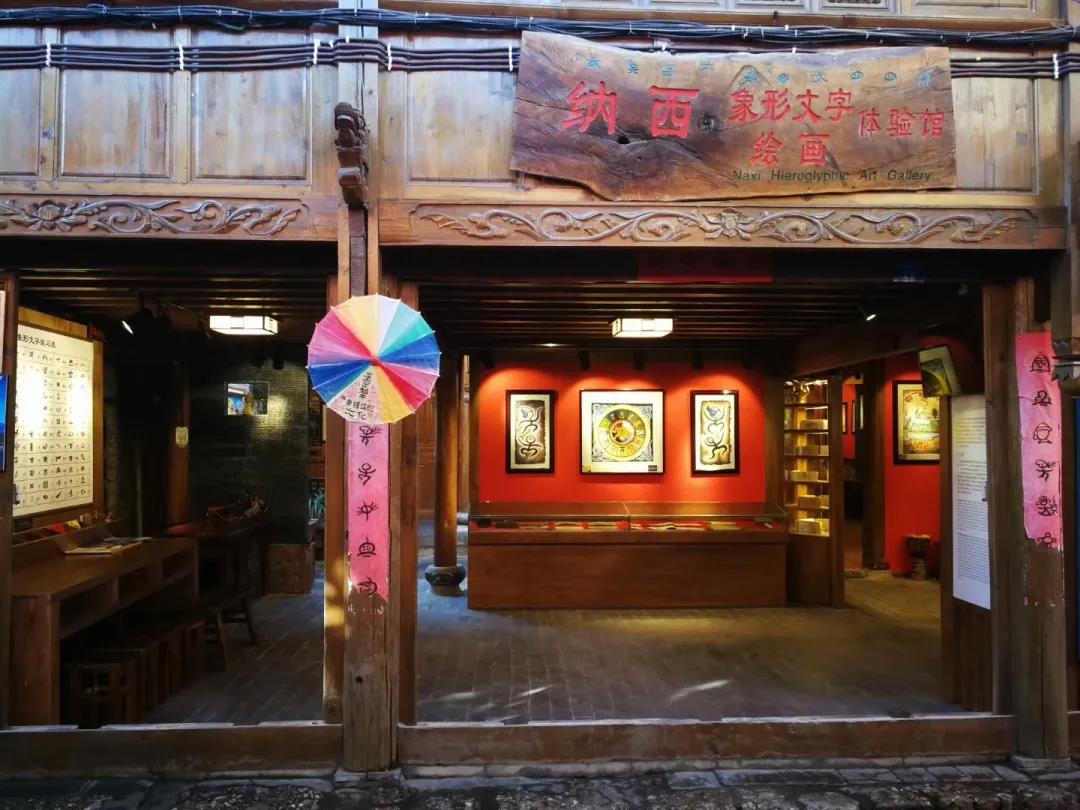
The Naxi Hieroglyphic Art Gallery (Online photo)
On Guangyi Street of Lijiang Old Town stands the Naxi Hieroglyphic Art Gallery. The curator He Runyuan is a Naxi native, who has inherited the Dongba characters for 30 years.
In 2016, He Runyuan opened the gallery to exhibit and spread the Dongba culture. Gradually, the gallery invited in tourists from around the world. In knowing about the steps to practice writing the Dongba characters on sand boards, they experienced the art in hieroglyph and the charm of Dongba culture.
Besides promoting Dongba culture via real-life activities, the gallery also followed the trends of short videos on the internet. In January 2019, He Runyuan joined hands with Dr. Duncan at the Chinese University of Hong Kong in rolling out series of video clips titled ‘Let’s Learn the Naxi Language’. “Using the video-sharing networks, we tried this for the first time, allowing more people to know about and fall in love with the Dongba culture," said He.
He Runyuan said a most effective way to conserve cultural heritages is to make creative cultural products out of the world heritages. "We invited cultural heritage inheritors to write special-made Dongba scriptures for visitors, which turned out to be popular among young people," added He. With tourist names on them, the writings feature signs of best wishes, good luck, and dispelling evils.
Huang Hai tells Stone Forest storied via music
NOTE: Located in central Yunnan’s Shilin Yi Autonomous County, the Stone Forest was selected as a World Heritage Site in 2007, and it is the world’s only karst topographical wonder in subtropical plateau regions.

Yi folks have group dance at the Stone Forest scenic area. (Online photo)
“Sani folks of the Yi people sing a drinking song, Ashima and Aheige propose a toast, and the Stone Forest welcomes guests from afar…” When it came to protecting the world nature heritage of Stone Forest, Huang Hai spontaneously began to sing the song “Stone Forest is most famed worldwide”. To Huang, a music teacher at the Shilin No. 1 Middle School, it is a great pleasure to allow more people to know about Stone Forest through music.
“Songs related to Stone Forest, especially the ones created by native singers, can stir the passion of the Yi ethnic folks in protecting the Stone Forest, instilling in them a sense of responsibility,” said Huang.
"The Stone Forest is grand, beautiful, soft, and passionate. As a World Natural Heritage Site, it is a property of mankind," said Huang. Like most natives of Shilin County, Huang would celebrate the annual Torch Festival at the Stone Forest scenic area. "Marked elsewhere, the festival seems meaningless," added Huang.
At the beginning of each semester, Huang would spend a period of class teaching the freshmen the song “Please Stay, My Friends from Afar” in the Yi language. “I hope to pass the idea of singing the Stone Forest to my students,” said Huang.
Chen Taimin and Asia’s only fossil world heritage
NOTE: The Chengjiang fossil site is located near the Maotianshan Mountain in central Yunnan’s Chengjiang City. Inscribed on the World Heritage List in 2012, the site is the only fossil world heritage in Asia. The Chengjiang site covers 20 categories and 280 plus species of fossils, showcasing the marine biological community and ecosystem in the early Cambrian period (541 to 513 million years ago).
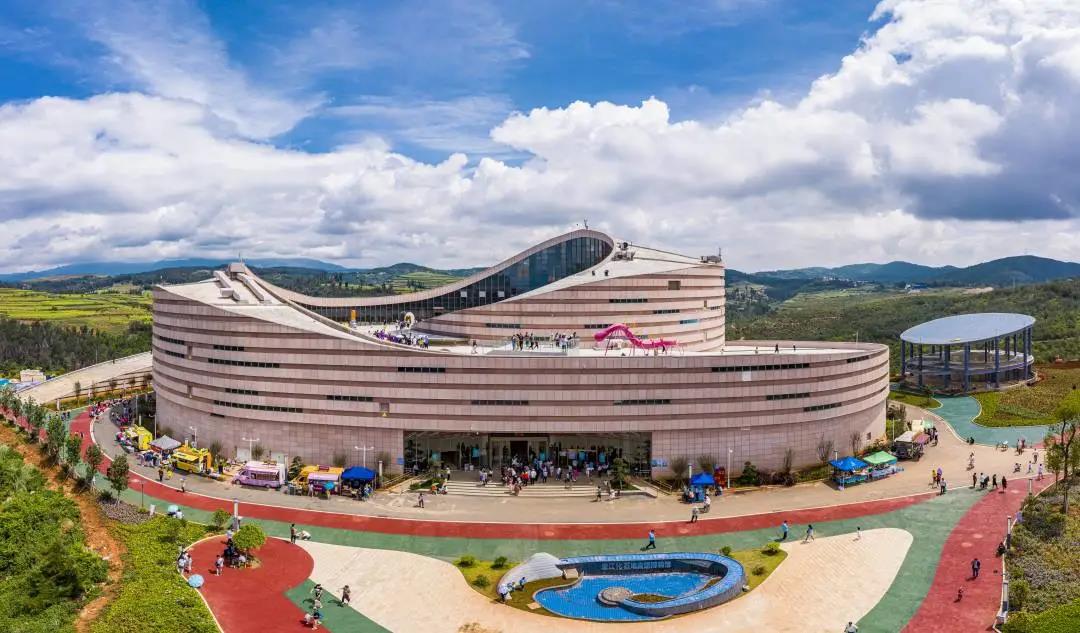
The Chengjiang Fossil Site Museum of Natural History (Online photo)
When Chinese researcher Hou Xianguang was looking for the Order Bradoriida in the Maotianshan Mountains in July 1984, he accidentally discovered numerous paleontological fossils here.
To better conserve and employ the fossils, the Chengjiang Fossil Site Museum of Natural History, a modern cultural facility, was built up right on the fossil site.
“Using the modern virtual-reality technology and the somatosensory interactive expressions, the museum tells audience the stories of fossils and life evolution in digital media (200 plus video clips),”said Chen Taimin, curator of the museum.
While talking, Chen took the visitors into the “subsea channel” formed by organic flexible screens. In no time, a peculiar gigantic creature rushed across the ceiling screen, puffing and blowing. It made a big show of its strength. Chen said the prehistoric creature is called a mystic shrimp (Anomalocaris). “With a two-meter body length, it is bigger than any other marine life form of the Cambrian riot. Today, the digital technology restored the shrimp on the screen, allowing us to see the charm of life forms on the earth back then.”
Thanks to advanced digital media, the lifeless fossils were enlivened and liked by the public. The Chengjiang Natural Museum welcomed an increasing number of visitors, who came to explore the origin of life and admire the charm of biodiversity.
Wang implements Azheke program
NOTE: Located in south Yunnan’s Honghe Hani and Yi Autonomous Prefecture, the Hani Terraced Paddy Field is the world’s sole cultural heritage named after a single ethnic group. It was inscribed on the World Heritage List in 2013.
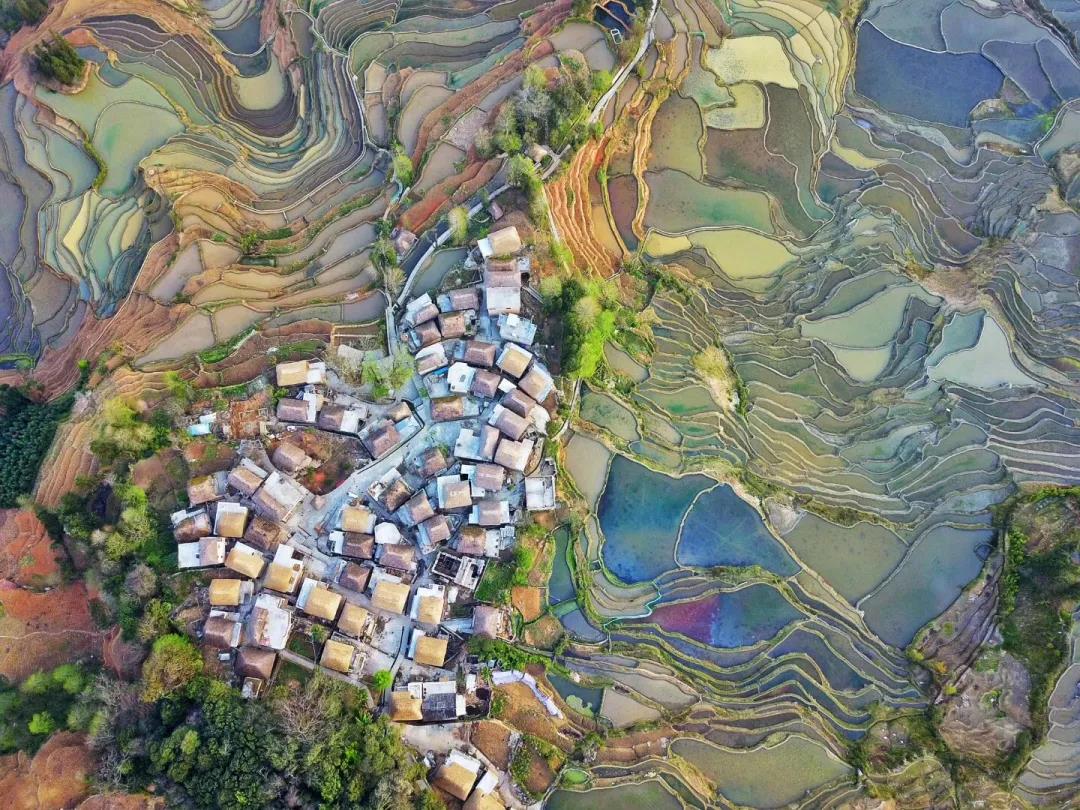
The Yuanyang Hani Terraced Paddy Field (Online photo)
“China has secured a full victory in the poverty battle, and so has Azheke,” said Wang Ranxuan, former chief of the Azheke village. As a poverty-alleviation official sent to Azheke in Yuanyang County, south Yunnan’s Honghe Hani and Yi Autonomous Prefecture, Wang finished his mission to end the poverty fight in the village in January, and he was to use his work experiences in Azheke in his next job.
Azheke is a village located in a core area of the Yuanyang Hani terraced paddy fields. “Following approval of the heritage-site status, visitors crowded in the village, but the tourist services were out of order,” said Wang, adding Azheke was faced with serious problems back then.
In January 2018, a team led by Bao Jigang, a professor at Sun Yat-sen University in the southern province of Guangdong, came to investigate tourism development in the Yuanyang terraced fields. The team proposed the Azheke program for the village.
In July that year, Wang Ranxuan and Yang Bing were assigned to guide the villagers in carrying out the Azheke program. Yang was pursuing his Ph.D. in tourism management at Sun Yat-sen University.
As a non-profit project of public benefits, the Azheke program put together heritage protection, tourism development and poverty alleviation, said Wang Ranxuan. By rolling out wilderness activities, traditional crafts and Hani culture experiences, tourism projects under the program were managed in specific ways, and the needs of tourists were met accordingly.
Since the program’s implementation, Azheke has gained over 700,000 yuan in tourism income, moving out of poverty 23 extremely poor households in the village. As shares of tourism dividend are closely related to efforts in heritage protection, villagers have raised their awareness in this regard, and they voluntarily participated in protecting the traditional Hani farming site.
Huang enriches villagers by heritage tourism
NOTE: The Three Parallel Rivers refer to the peculiar landscape formed by the rivers of Jinsha, Lancang and Nujiang. It was listed as a World Natural Heritage in 2003.
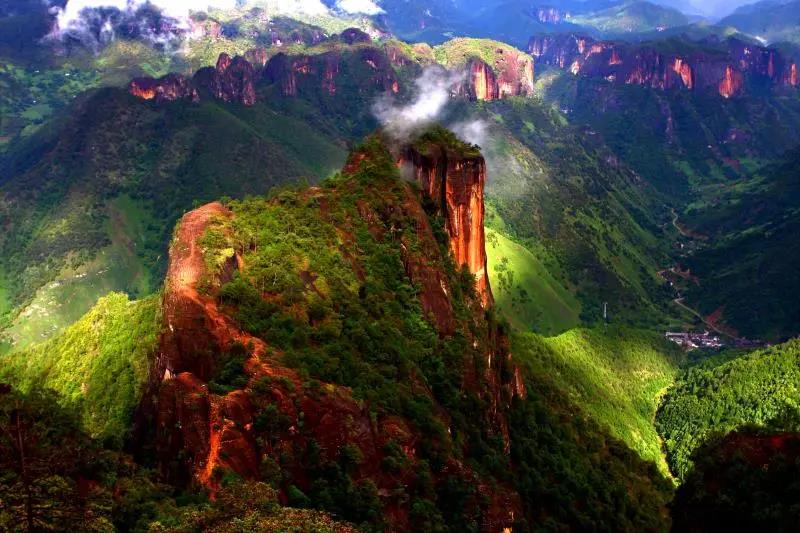
The Laojun Mountain (Online photo)
The scenic Mt. Laojun in Lijiang is part and parcel of the Three Parallel Rivers heritage site. “We villagers used to fell trees for firewood and dig hills for stone and sands in house build-up. As a result, Laojun’s ecology suffered a lot,” recalled Huang Wenwu, Party chief of the Liming village near the Laojun Mountain. Huang was eager to share ideas on how to enrich local folks with rural tourism.
Luckily, the felling activity was stopped by later effort to apply for the world heritage status for the three parallel rivers. In 2009, the OCT World Expo Tourist Group joined hands with locals in running the Laojun scenic area, creating a poverty-alleviation mode where villagers’ income was increased and the ecology damage was minimized.
“The best conservation for a heritage site should be realized in sensible development, where locals’ wellbeing is improved and they are willing to protect the natural without any strings attached,” said Huang. Based on the development mode, the facilities for eco-protection were built up, and part of the tourism revenues went to the villagers.
Now more and more villagers have adapted to the new life at the world natural heritage site of the three parallel rivers. “Instead of logs for fire, the villagers now use liquid gas, solar energy and electric oven for heating, and they also realized that caring for the heritage site contributes to a better life,” added Huang.
Reporting by Yao Chengcheng and Duan Jianxin; Trans-editing by Wang Shixue